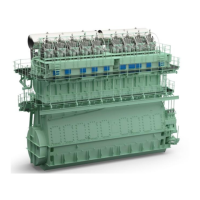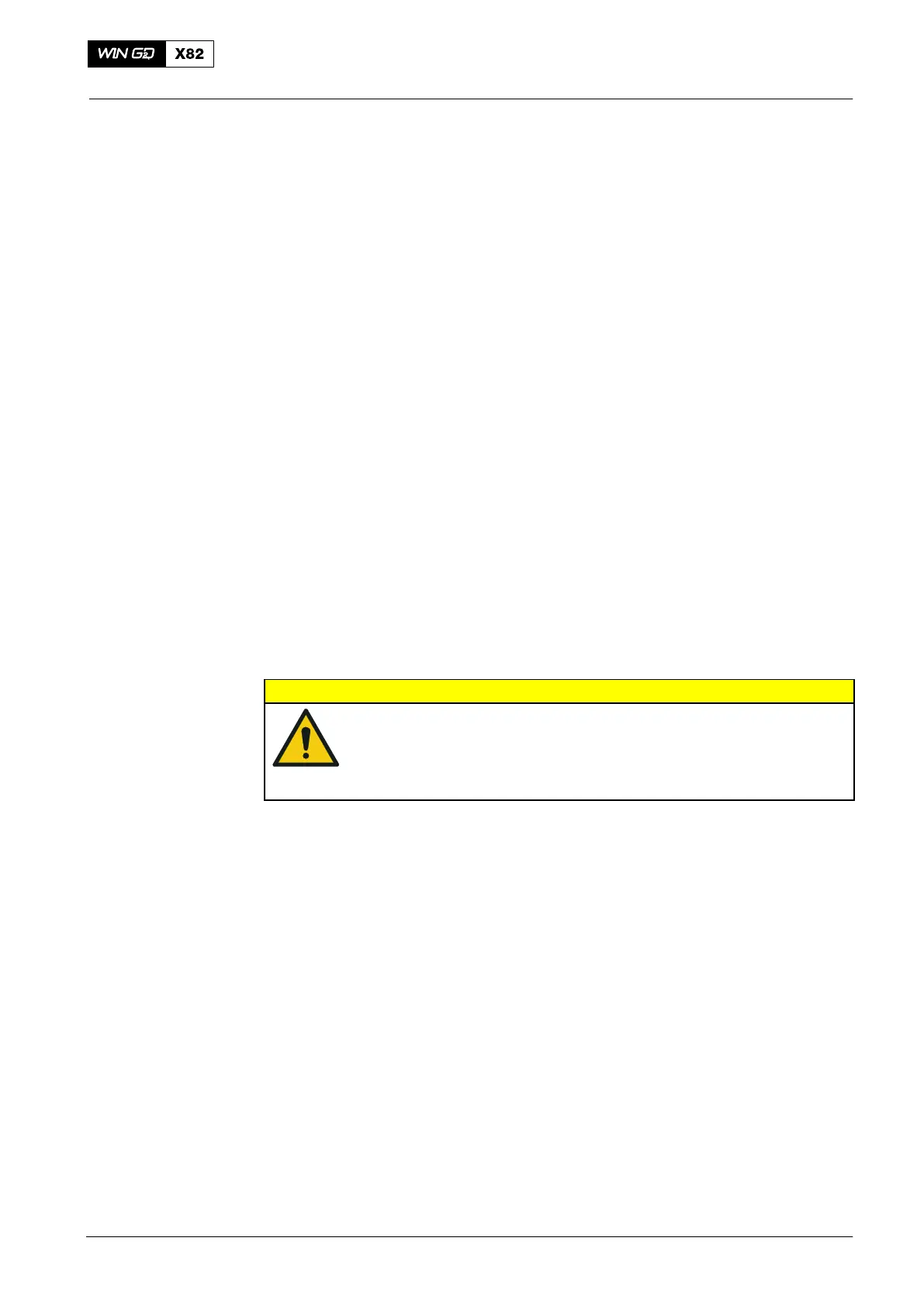Operation
5591−1/A1
Winterthur Gas & Diesel Ltd.
1/ 2
Servo Pump Unit with Dynex Servo Oil Pump
1. General
The servo pump unit (1, Fig. 1) has two built−in servo oil pumps. These pumps supply
HP servo oil, which operates the exhaust valves and the injection. The servo oil flows
from the main bearing oil supply, through the automatic filter (10) to the servo oil
pumps.
The gear wheel on the crankshaft moves the intermediate wheel on the drive supply
unit. This movement turns the gear wheels (3, 4) and the pinion (5) on the shaft (6).
For more data about the drive supply unit, see Drive Supply Unit 4104−1.
2. Function
During operation, the full load range is equally supplied to the servo oil pumps.
The electrically operated pressure control system (the nominal pressure value is
related to the engine load) adjusts the servo oil pressure for the full load range, i.e.
high pressure (approximately 200 bar) at high engine load, and decreased pressures
at low engine load.
Shearable overload protection (OP) on each shaft (6) prevents full damage to the
gear wheel (4) if a pump fully seizes.
If a servo oil pump becomes defective, the engine can use the full load range.
The flow sensors (11) monitor the oil supply in each of the inlet pipes to the servo oil
pumps (2). A possible failure of a servo oil pump shows in the alarm and monitoring
system.
CAUTION
Damage Hazard: If a servo oil pump becomes defective, do not
operate the engine for too long. If the other pump becomes
defective, the engine cannot operate. You must replace the
defective servo oil pump as soon as possible (see the
Maintenance Manual 5552-1).
3. Lubrication
Oil flows into the oil inlet (OI, Fig. 1) through the oil bore (OB) in the gear wheel (3),
then into the internal bores inside the casing (8) to lubricate the bearings. The oil also
flows to the supply pipes (9). The shaft (6) has an internal bore with holes. The oil that
flows through these holes comes out as a spray and lubricates the teeth of the gear
wheel (3) and pinion (5).
2014

